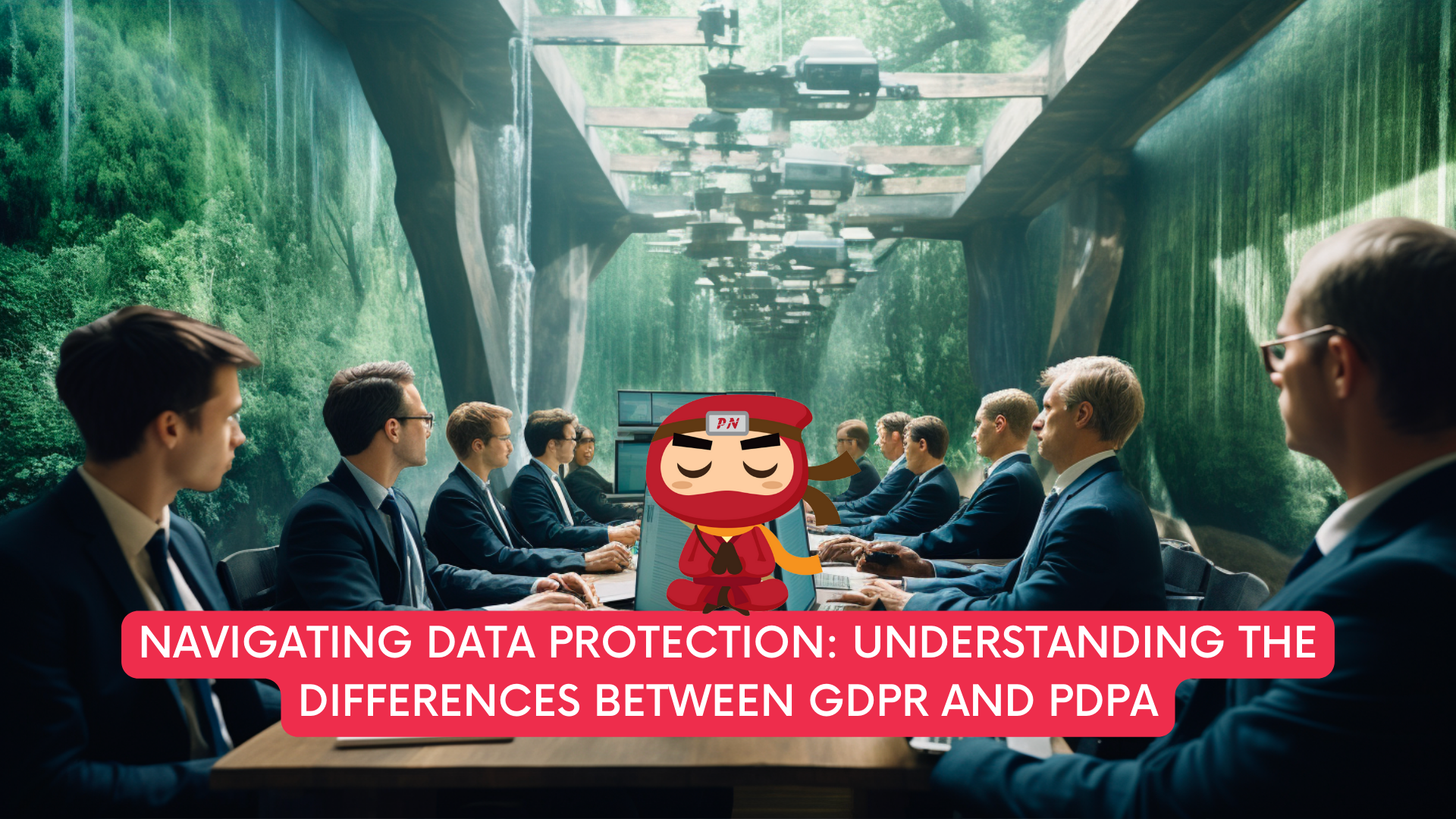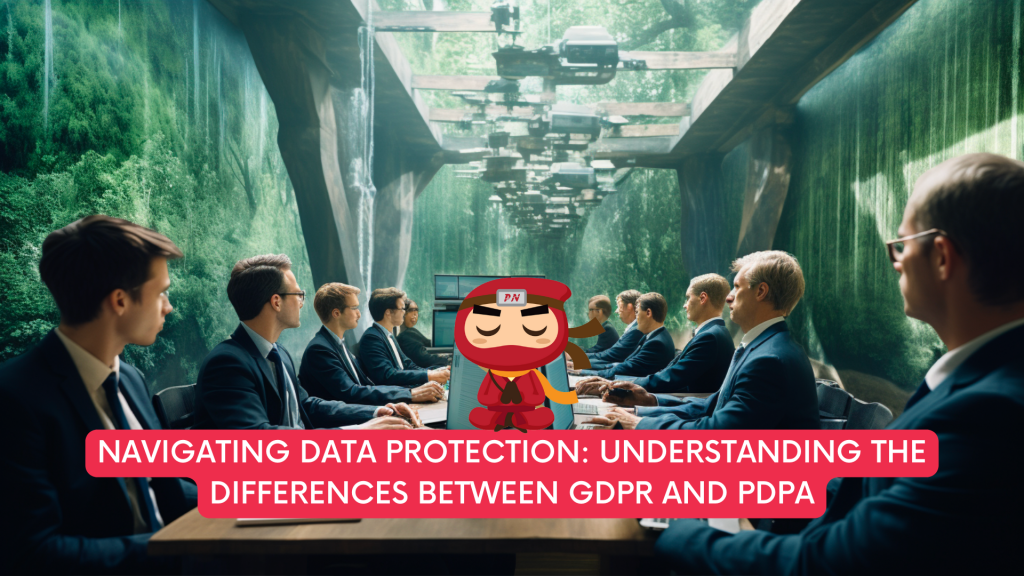KEEP IN TOUCH
Subscribe to our mailing list to get free tips on Data Protection and Cybersecurity updates weekly!







In an era where data privacy is a paramount concern, global organisations must navigate a complex web of regulations to ensure compliance and protect the personal information of individuals. Two prominent frameworks in this landscape are the General Data Protection Regulation (GDPR) of the European Union and the Personal Data Protection Act (PDPA) of Singapore. While both aim to safeguard personal data, understanding their nuances is essential for organisations operating in a global context.
The GDPR, implemented in May 2018, has extraterritorial reach. It applies not only to entities within the European Union but also to those outside the EU that offer goods or services to EU residents or monitor their behavior. For instance, a Singaporean organisation using EU currencies or languages, or referencing EU-based customers, falls within the GDPR’s ambit.
The PDPA, Singapore’s data protection legislation, applies to the processing of personal data in Singapore. Compliance is mandatory for organisations that collect, use, or disclose personal data, with the PDPA focusing on local operations and data activities.

The GDPR emphasizes obtaining explicit consent from individuals for processing their personal data. Additionally, it provides six legal bases for data processing, including the necessity of processing for the performance of a contract, compliance with a legal obligation, protection of vital interests, consent, the performance of a task carried out in the public interest or in the exercise of official authority, and legitimate interests pursued by the data controller or a third party.
The PDPA, on the other hand, mandates organisations to obtain consent for collecting, using, or disclosing personal data. However, with amendments in the enhanced PDPA effective from February 1, 2021, exceptions to consent have been streamlined. These exceptions, categorized broadly, mirror the legal bases under the EU GDPR, marking a move towards alignment with global data protection standards.
The GDPR allows data processing without explicit consent under specific circumstances, such as contractual necessity, legal obligations, protection of vital interests, tasks carried out in the public interest, and legitimate interests.
The enhanced PDPA introduces exceptions to consent that closely align with GDPR’s legal bases. While consent remains a cornerstone, exceptions now include contractual necessity, compliance with legal obligations, protection of vital interests, public interest, and legitimate interests.
The GDPR’s extraterritorial scope means that even Singaporean organisations may need to comply if they offer goods or services to EU individuals or monitor their behavior. Factors like language use, currency, or referencing EU customers signal an intent to serve the EU market.
While compliance with the PDPA doesn’t equate to GDPR compliance, the alignment of exceptions to consent signifies a step toward harmonization. However, organisations must carefully navigate the distinct requirements of each regulation when operating in both jurisdictions.

The Personal Data Protection Commission (PDPC) has developed an infographic illustrating the broad comparison between the PDPA’s exceptions to consent and the GDPR’s legal bases for processing of personal data. This visual aid facilitates a clearer understanding of the parallels and differences, aiding organisations in their compliance efforts.
As global data protection standards continue to evolve, organisations must adapt to diverse regulatory frameworks to ensure the privacy and security of personal data. The GDPR and PDPA stand as pillars of data protection in their respective regions, each with its unique nuances.
While the enhanced PDPA brings Singaporean legislation closer to the GDPR, organisations must remain diligent in understanding and complying with the specific requirements of each, especially when operating in both the European Union and Singapore.
Navigating this complex landscape requires a comprehensive approach, combining legal expertise, technological safeguards, and a commitment to upholding the highest standards of data protection.
Your appointed DPO can work with you on your PDPA compliance, ensuring that there will be policies in place to make sure that the handling of personal data is PDPA compliant.
A Data Protection Officer (DPO) oversees data protection responsibilities and ensures that organisations comply with the Personal Data Protection Act (PDPA). Furthermore, every Organisation’s DPO should be able to curb any instances of PDPA noncompliance as it is the officer responsible for maintaining the positive posture of an organisation’s cybersecurity.
DPOs complement organisations’ efforts to ensure that the organisation’s methods of collecting personal data comply with the PDPA. It also ensures that policies are set in place to make sure that there will be no instances of data breaches in the future.
Don’t wait any longer to ensure your organisation is PDPA compliant. Take our free 3-minute PDPA Compliance Self-audit checklist now, the same “secret weapon” used by our clients to keep them on track. Upon completion, we will send you the results so you can take the necessary action to protect your customers’ data. Complete the free assessment checklist today and take the first step towards protecting your customers’ personal data.